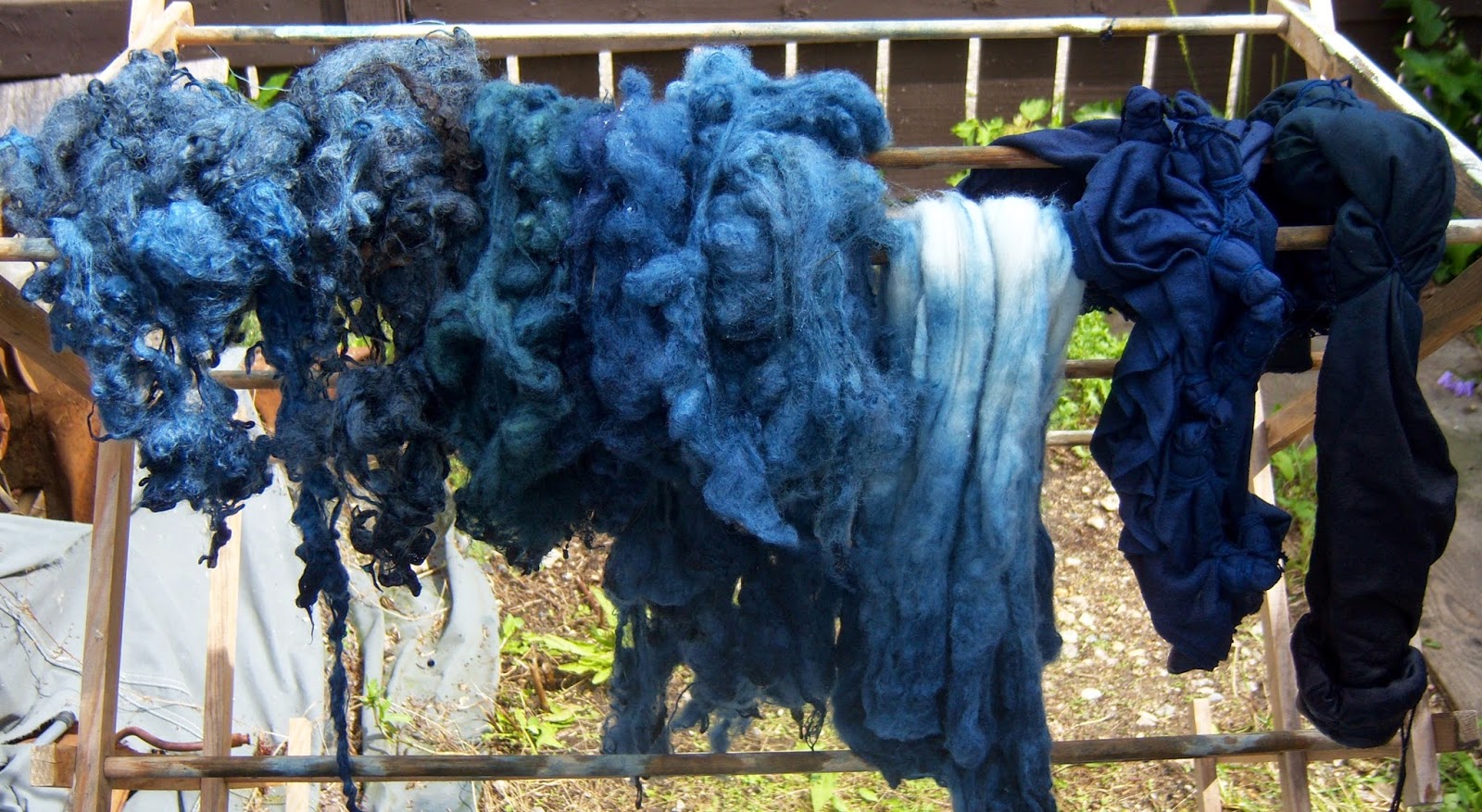The expectation these days is that yarn should be soft; that's true for next to the skin items, but softness comes with a cost, which usually means sacrificing some durability. Historically, yarns intended for daily duty were firmly spun and plied. This included sweaters, hats, socks and gloves. Tight twist is common in weaving yarns, but if you ever have the opportunity to handle historical every day textiles, especially from countries as Peru, you may be surprised at the amount of twist and the tight knitting in the garments, which could block cold and wind and shed water. If you were making yarns for bags, there might be so much twist in the spinning and plying that a wool yarn could feel like barbed wire. The amount of twist might also be a design element, causing tracking or puckering in the weaving and deliberate skewing in the knitting.
The above photo shows the shawl in progress. (I apologize for the slight blurriness of the pictures and the shift in the colours, which are far deeper and richer than I was able to capture today. My photo skills this afternoon consisted of yelling at Morris to get out of the shot.) The stripes created by fractal spinning are working quite well. The wrap will have a sideways knitted on border, so the striping should continue along the bottom edge. I'm knitting in garter stitch, so I expect the shawl to block out to nearly twice the size on the needles.
The small bag holding my shawl yarn is an experiment in working with overtwisted yarns. I spun and plied Romney singles several times over to produce a yarn which is unwearable, but which wears well, so it's perfect for bags or rugs. It's knitted in a twisted stitch to accentuate the yarn twist and it will not felt, despite several trips through washer and dryer. Unlike many of my other experiments, I expect this bag to outlast me. By the way, it's dyed with indigo, lichen (the pink) and marigold in an iron pot (I think).
Above the bag is my basket of yarns I dyed using the indigo vat. With the shift in the weather, the vat has remained blue, even with the addition of more chemicals. That usually means that the vat is too cold and since I can't bring it into the house or keep it warm outside, it may mean that I'm done with indigo dyeing for the year. This is likely a good thing, since in addition to the yarns shown, I've dyed about 2 kilos of raw fleece and several metres of cotton and silk fabric.
The lighter blue yarns in the next photo are the skein of commercial silk noil singles, commercial wool yarn and a commercial 2 ply alpaca. The rest are skeins of hand spun singles and plied yarns, including wools, llama and alpaca, most of which have more twist than other spinners add, for the reasons listed above and the fact that some of them will go into tapestries. Tapestry weaving produces a lot of wear and tear on the yarns, both in warp and weft. You do not want your warp to break and, while tapestry wefts don't require as much twist, they do need to be able to withstand passing through the sheds and being packed into place.
There's been a lot of buzz in the spinning community these days about the proper amount of twist required in hand spun yarns and the ways to accurately measure that twist once it's in there. Some spinners don't worry about twist control at all; they prefer to judge a yarn by sight and feel and skip the math all together. Others concern themselves with precise details as to how much twist is required for any given yarn and cite all kinds of mathematical formulae and theories to support their claims to precision. In between are most spinners, who may want to know a bit of twist theory, but don't want to get too bogged down in details. It's a good idea to know the basics of twist calculation and yarn measurement (TPI, WPI, Angle of Twist, etc.), but the best way to determine what twist is required for which yarn is to experiment in the fibre preparation, spinning, fabric construction and finishing.
My closest spinning friend (my closest friend in all things, really) tells her students to, "Assume nothing; Believe no one and Check everything." That's excellent advice-you can read all you want about spinning, but in order to be a spinner, you must spin. In order to know how to produce the yarns you want, you must practice and test every theory and assertion, no matter what you may have heard from any other spinner, including the masters. Don't get caught by your own assumptions, either. What you think you know is not always so.
In the end, spin for joy and practice for the pleasure of the practice, then apply what you've learned. Once you're comfortable with what you know, challenge that knowledge. It's easy to become comfortable with our own certainty, but as Pema Chodron tells us, the trick is to be comfortable in uncertainty. The truth is out there, maybe, but it may not be what you think it is.
Namaste.

























